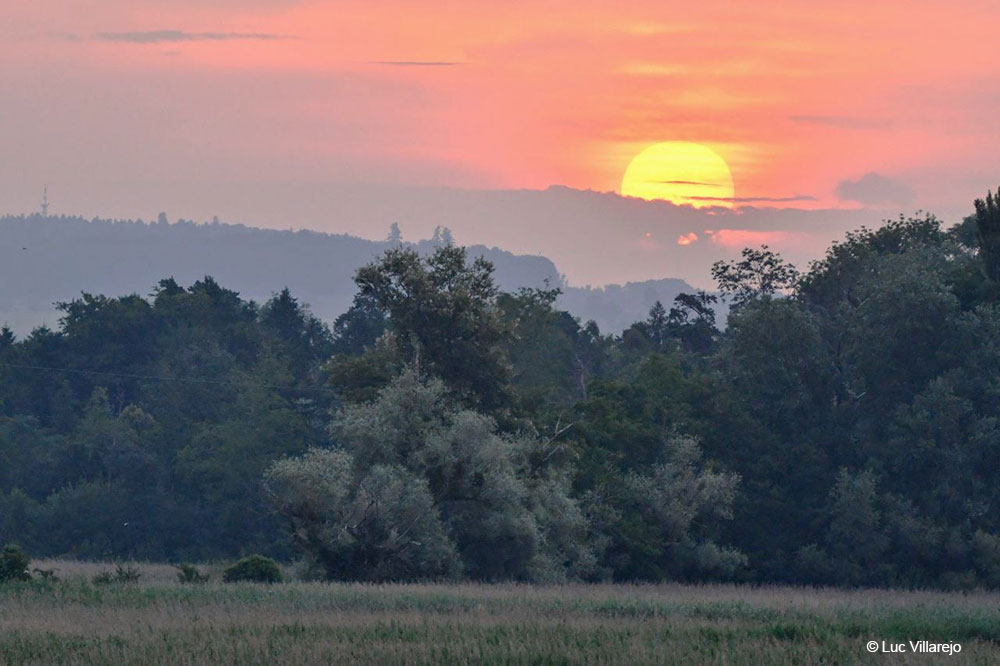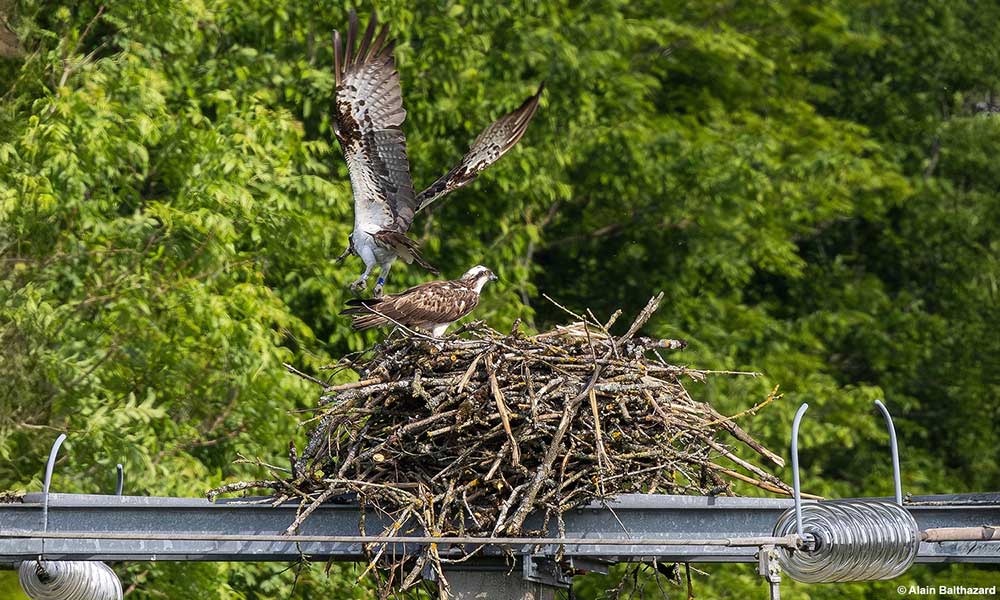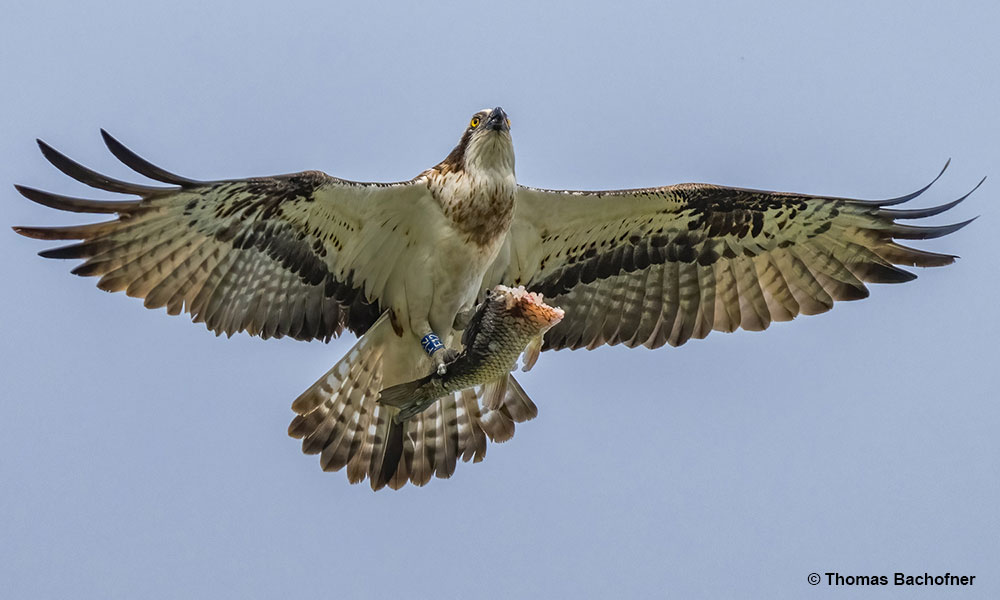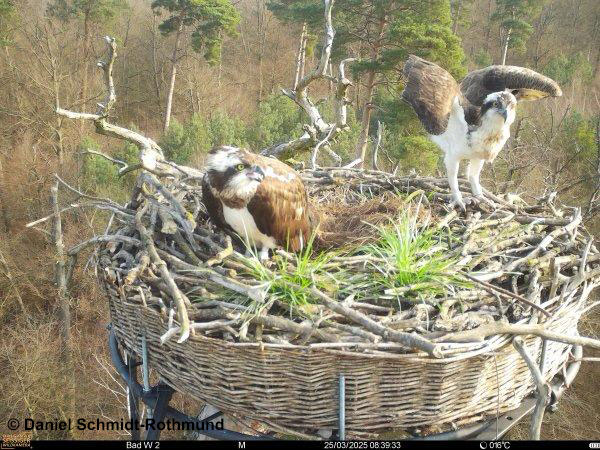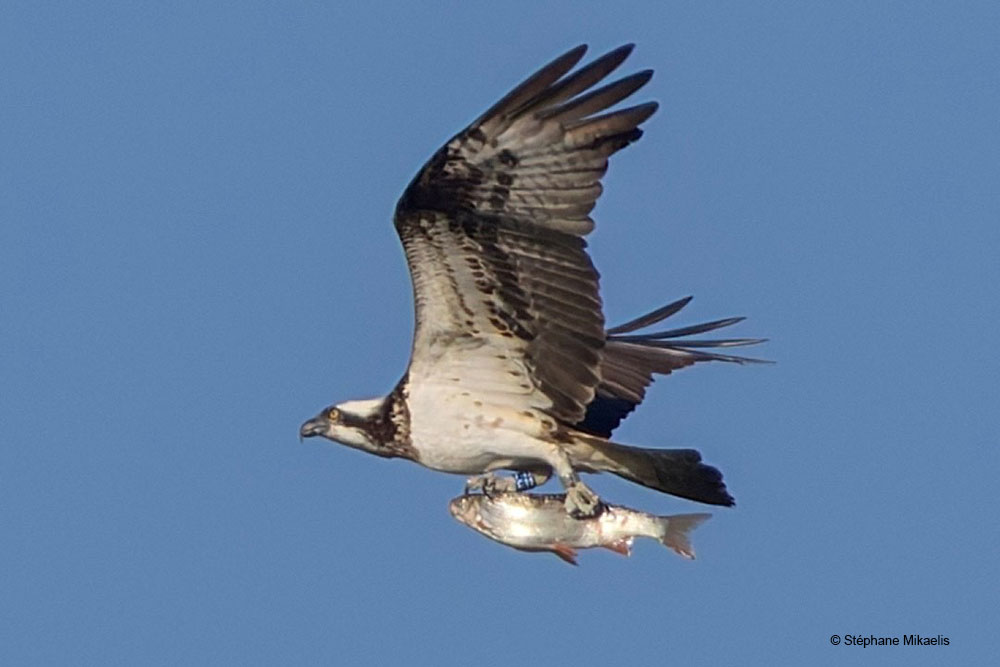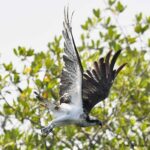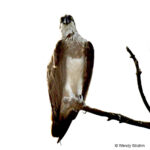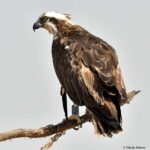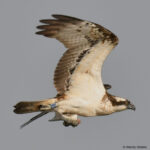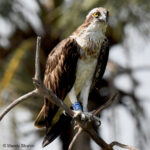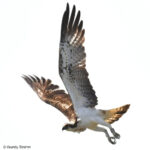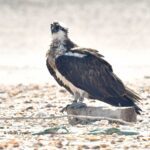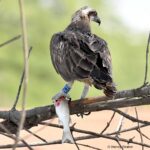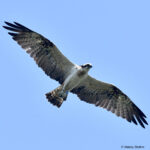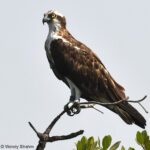The first Osprey Morning of this year took place on Sunday 15 June and started with a slight panic, when two participants were locked inside the Cudrefin campsite as they had been given the wrong code to get out. Fortunately they then managed to cleverly escape via an “unofficial exit”, so were still able to get to their observation post on time. Just one illustration, among so many others, of the dedication of the 44 volunteers who got up well before the crack of dawn to look for Osprey from 23 different observation posts. At least this time everyone was able to enjoy a magnificent sunrise, quite different from our first Osprey Morning last year!
The day then got off to a flying start, with our three known males of the Three-Lakes region, as well as an unringed female which has been observed sporadically in the region since mid-May, all being spotted before 6am. Arthur (F12) was seen flying from the Aar River towards Hagneck at 05:40, where he chased away a pair of Egyptian Geese before leaving for a fishing trip, reappearing with his breakfast at 06:13. He was particularly active from 08:16 until after 10am, bringing many branches to a new nest under construction. Let’s hope that a violent storm that hit the region in the afternoon with winds up to 142km/hour (causing many broken branches, uprooted trees and even the cancellation of a music festival in the evening) won’t have damaged this nest (not visible as it is masked behind a small wood).
At the Lake of Neuchâtel, another Osprey – almost certainly Racine (F29) as his ring was read later – seemed to be perfectly synchronized with Arthur, as he was first seen between Fanel and the Thielle jetty at 05:40, before having his breakfast at 06:22. However, the “early bird” prize went to two other Osprey – Olympe (F28) and an unringed female – spotted together in the Grande Cariçaie between 05:25 and 05:30, with one of them then catching a fish at 05:46, and Olympe capturing another one at 09:40. However, surprisingly none were seen elsewhere, either in the Aar and the Doubs River valleys, or around Lake Morat. But we know only too well how discrete the species can be at this time of the year!
While Racine seemed to spend most of the Osprey morning all alone at Fanel, the next day it was his turn to be spotted in the company of an unringed female. Was it the same one that visited Olympe the day before, or could there possibly be two different females hanging about? A key goal for our next Osprey morning will be to try to solve this mystery. Until then, many thanks to all the team who participated on 15 June (keeping in mind that not being lucky enough to see an Osprey during this morning is as valuable for us as having seen one). We are still looking for volunteers to search for Osprey at good fishing places for the next Osprey morning on Sunday June 29. So if you are ready to get up very early in the morning (taking advantage of the day before it gets too hot), please feel free to sign up here!

